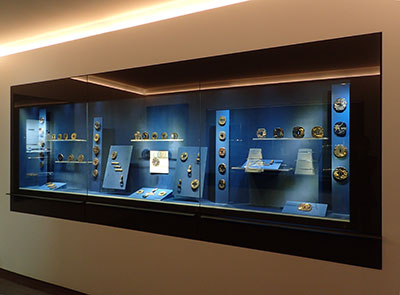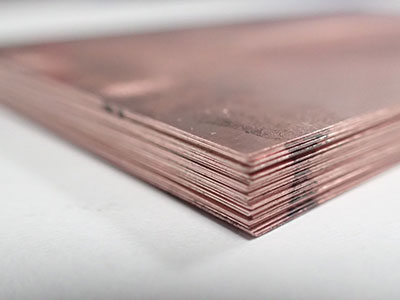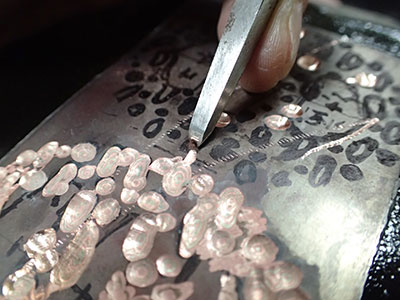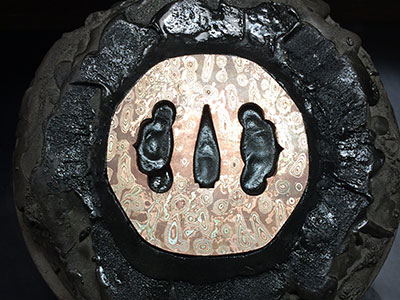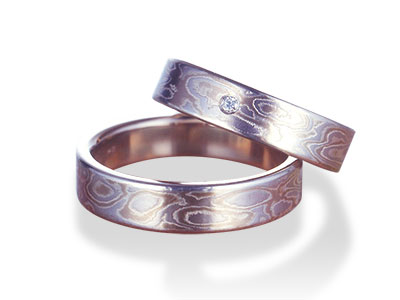Find “Mokume Gane” Chapter 1
The Mokume Gane works that had been metal fittings for swords in the Edo Period started to be collected by foreigners as works of art during the Meiji Period. Even now, there are important collections overseas, displayed in museums such as the British Museum in London and the Metropolitan Museum of Art in New Work.
The wedding rings that are in your possession are made of this Mokume Gane which has fascinated people all over the world.
Our aim is to continue our studies in this field so that we can strive to make Mokume Gane even more appealing.
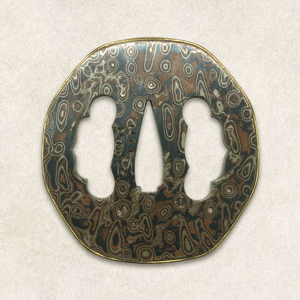
Reproduction tsuba of Mokume Gane and other materials,
signed Tsunetada, residing in Kawagoe.
Tsuba of copper, shakudo, and shibuichi Mokume Gane and other materials. Signed Masaki
Reproduction of Mokume Gane Works From the Edo Period
At Mokumeganeya, reproductions are carried out of important Mokume Gane works from the Edo Period held both in Japan and overseas.
By studying that period’s outstanding techniques, we strive to produce new Mokume Gane works.
The current work is a reproduction of a late Edo Period Mokume Gane tsuba which is held at the Baur Foundation Museum of Far Eastern Art in Geneva, Switzerland. This museum started with the works gathered by collector Alfred Baur (1865-1951) and currently holds about 9000 pieces. It is the most important collection of Far Eastern art in Switzerland.
There are 41 pieces that fall into the Mokume Gane and guribori categories, and the museum was very helpful in making these available for us to study on our visit there in March this year.
We were very honored that the piece that was reproduced in May of this year was given the “Effort Prize” at the Society for the Preservation of Japanese Art Swords’ Shinsakuto (newly made swords) exhibition.
Facts About Reproduction Studies
The subject of the current reproduction study is a Mokume Gane tsuba that was made by Tsunetada who lived in the later part of the Edo Period in Bushu Kawagoe (the current city of Kawagoe, in Saitama Prefecture).
The characteristic of this work lies in its highly-prized beautiful pattern of overlapping concentric circles, like swirls, known as “Tamamoku.”
The challenge in this reproduction was to recreate faithfully the “Tamamoku” pattern that was a specialty of Tsunetada. Through trial and error, and numerous failed attempts, we were finally able to reproduce realistically the true depth of this pattern.
The process of reproducing a piece starts with making a metal plate of the material. Following investigations, a three-layered metal plate of copper, shakudo and jo-shibuichi was used and was made into a 31-layer stack by firing and compressing.
Tsunetada’s unique “Tamamoku” pattern was recreated by tracing square and oval shapes from the original onto the metal plate, engraving them using a “Tagane” chisel, and then forging it flat using a hammer and roller.
The final product was beaten down from a thickness of 4.65mm to 0.7mm but in doing this, very fine work was required in adjusting the depth, angle and size of the carving, to within 0.1mm to achieve the desired “Tamamoku” pattern.
As a result, it was possible for us to create the complex and unmatched “Tamamoku” pattern that is so utterly self-contained.
The Spirituality of Mokume Gane
As one experiences with all five senses the changes in the metal materials during the manufacturing process, one begins to communicate with these materials, and that is the technique of Mokume Gane that produces these unique patterns.
One can say that it is a technique that incorporates the spirituality of the relationship between the materials and the craftsman.
This applies also to the manufacture of Mokume Gane rings.
The craftsman communes carefully with each and every material so that the patterns you wish for are expressed in the patterns of your ring.


